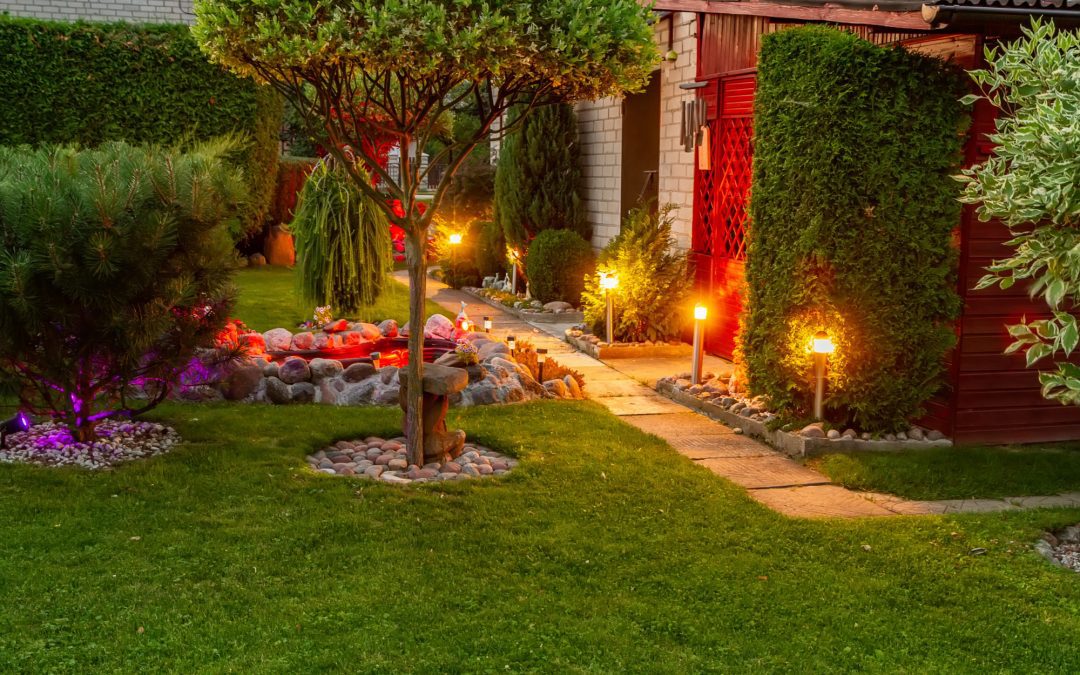Whether you’re new to landscaping or you simply want to improve your skills, today’s your lucky day. Here, we present you with our ultimate guide to landscape design.
In it, you’ll find the ten best landscaping tips that every landscaper needs to know. This includes choosing path dimensions, setting boundaries with landscape edging, picking locations for hardscapes, and more.
To reiterate, it’s a very bad idea to start your landscaping project without knowing these essential tips. This would result in disastrous mistakes that require you to undo, and then redo, a massive amount of your completed work.
Why put yourself through this turmoil just to needlessly learn these tips the hard way? As a more pleasant alternative, trust our expert advice and learn the tips you need by reading this guide.
1. Site Your Hardscapes Based on Function
Your first landscaping task should be to plan the location of hardscapes like gazebos or patios. To do this, simply consider the function of the structure you want. Imagine yourself and your guests doing whatever it is you plan to do on/near the structure.
Soon enough, you’ll have a clear idea of the best location for these activities. By extension, this reveals the ideal site for the structures themselves.
As an example, imagine serving food at your outdoor dining patio. Would it make sense to site this area 50 feet from your home? No, it would make more sense to connect it to your kitchen (where the food is made) via a wide, sliding glass door.
2. Choosing Path Dimensions
Next, you’ll want to connect your hardscapes with a pathway or a network of pathways. There should be designated paths through any garden areas, too.
Planning these paths can also help you see if your hardscape sites need rearranging. For example, two of your planned structures might be so close together that they constrict the only possible space for your pathway. You don’t want your pathways to be uncomfortably narrow.
That’s especially if you hope to host parties with lots of guests. Narrow pathways lead to foot traffic jams and/or people stepping off the path to get around each other.
To offer a dimensional reference, a path width of 18 inches is just enough to accommodate one person at a time. Furthermore, remember to plan your landscape lighting solutions when siting structures and pathways.
3. Know Your Gardening Skills
Landscaping should always include some types of foliage. And that requires you to have some amount of gardening knowledge.
If you already know the extent of your gardening skills, you should incorporate those specific plants that you know how to grow. Otherwise, you’ll need to develop these skills before you start your project.
That means doing research on gardening and practicing your skills for at least a year. Again, this must be done before you add plants to your landscape design. Otherwise, maintaining your foliage will be a constant struggle.
4. Plant With Purpose
There are 2 main purposes for any garden: food and aesthetics. Decide which of these purposes you want to incorporate into your landscape design.
To be clear, you’re welcome to use both. We just want you to remember this principle when choosing foliage.
5. Plant For All Seasons
Most plants are seasonal in one way or another. Namely, they look nice/bloom/produce fruit during only one specific season per year.
Thus, if you don’t choose carefully, you’ll have a landscape design that’s only attractive for two months out of the year. Make sure you choose a large enough plant variety to benefit your landscape design all year long.
6. Plant in Groups
Always plant each type of foliage in groups of 3-5. There are two important benefits of this practice.
First, a solitary plant can easily get overshadowed by a larger, fuller plant nearby. But planting in groups allows you to see the beauty of every type of plant you include.
Secondly, different plant types require different watering strategies. So, it’s easier to water your plants when they’re grouped by type.
7. Give Trees Room to Grow
Before you plant, know how big your plants will become in the future. This mostly applies to trees.
For example, let’s say you plant a tree right next to your gazebo. When the tree is bigger, the roots may begin to shove against and damage your gazebo. Then, one or the other will have to be removed.
8. Segregate Your Garden and Lawn
Where does your garden end and your lawn begin? Without landscape edging, your garden has no boundaries.
On the contrary, it grows to fill any space you give it, eventually spilling into your lawn. You must install some type of barrier to prevent this from happening.
9. Use Good Soil and Mulch
As you know, using good soil and mulch is a smart, effective way to grow a healthy garden. Besides that, these are usually dark in color. This adds great contrast to showcase the bright colors of your plant selections.
10. Don’t Forget Irrigation
Lastly, watering all your plants by hand is needlessly toilsome and time-consuming. Instead, plan an irrigation system before you plant.
Choose sprinklers, misters, a drip system—whatever you need—and get these installed first. When planning this, consider whether this will affect the placement of any hardscapes you have planned.
Try Out These Landscaping Tips
Don’t forget the landscaping tips you learned here today. Keep this guide for reference and apply these tips for the perfect landscape design.
Do you need help with your landscape renovations/hardscape installation projects? If so, contact the experts at Sarasota Landscaping to get started. Call us at 941-893-7767 or fill out the form on our contact page.

